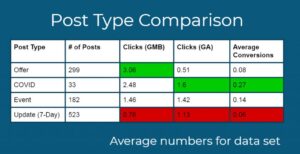In today’s shop anywhere, anyhow world, omnichannel personalization is key to effective customer engagement, and 85% of consumers want it. However, brands are failing to meet customer expectations around personalized omnichannel experiences, and only 3% of U.S. companies said they have true omnichannel personalization. One way marketers can deliver omnichannel personalized experiences is by leveraging a customer data platform (CDP). Below are three strong CDP application features.
Become the best CRMer you can:
CRM Hack: measuring the right marketing campaign KPIs
How To: use loyalty data to power retention and reactivation
See how brands take their email deliverability to the max
Get inspired: great sports betting campaigns to follow
Build a Unified Customer Profile
Creating omnichannel personalization starts with having a unified customer profile. But when customer data is inconveniently stored in siloed platforms, obtaining a 360° view of customers can be challenging. Only 47% of marketers have a complete view of customer data. Data silos create fragmentation and make scalable 1:1 personalization difficult to achieve. That’s where a CDP platform comes in.
CDPs collect unstructured and structured data from across all online and offline customer touchpoints to create a unified profile in real time. This enables a complete view of your customers and gives them omnichannel personalized experiences across channels. For instance, with a CDP, store associates can access customers’ online purchase behavior and provide personalized customer services.
Having a unified customer profile starts with good data. Poor quality customer data can contain errors such as incomplete or missing information, outdated statistics, or inaccurate data that will prevent you from building a strong customer profile and delivering personalized omnichannel experiences.
To improve your data quality, a CDP cleans your database by eliminating redundancies and reconciling missing details or incorrect data. This ensures that you have accurate and clean customer data, get quality insights, and improve your ability to deliver 1:1 personalized experiences on all channels at scale. Smart brands like Walgreens are partnering with CDPs to provide a unified, 360-degree customer view and unlock insights that power personalized customer experiences.
When shopping for CDPs, find out what kind of data the platform can capture and if it can be integrated with different data sources. Also, make sure to find out how data quality is measured.

Identity Customers
Recognizing both known and anonymous customers across all touchpoints is key to delivering a personalized omnichannel experience. 43% of consumers say that being known as the same customer wherever they are makes them feel like brands recognize them as individuals.
However, recognizing that mobile phone User A is the same person as desktop User B is easier said than done. It’s easy to lose track of customers as they interact with you on different devices, browsers, or channels. 71% struggle to maintain accurate IDs of their customers over time.
Enter identity resolution.
Many CDPs feature identity resolution functionality that can determine customer identity across multiple devices and channels in real time, using personally identifiable information (PII) like email addresses, phone numbers, device IDs, sessions, and cookies. This delivers an accurate and complete view of customers across digital and offline devices and provides a consistent experience at any time on any channel, device, or touchpoint. For instance, if a customer abandons a purchase on your website and buys in-store, a CDP can link both activities to the same customer, and follow up with relevant and personalized recommendations.
Because customer profiles keep changing, CDPs assign each customer an internal identifier and maintain it over time despite changes or multiple versions of other identifiers, such as email addresses or phone numbers. This ensures that you consistently have updated customer profiles and the insight needed to deliver relevant messages and content.
If you’re worried about privacy issues arising from PII use, you don’t have to be. CDPs can perform identity resolution by using first-party data only, thereby avoiding potential privacy issues.
However, when choosing a CDP for identity resolution purposes, make sure it has an identity graph to enrich PII with channel, device, or behavioral data, so that customers can be identified across multiple devices. Also, ensure the CDP enables you to share customer profiles with martech or adtech platforms so that it can be used to run personalized omnichannel campaigns.
Understand the Omnichannel Customer Journey
Omnichannel consumers tend to engage with multiple channels before making a purchase. 75% of people start an activity on one device, then finish it on another. To consistently deliver an individualized omnichannel experience across all channels, you need to understand your customer’s journey on an individual level—and a good CDP can help.
An orchestration-enabled CDP can connect to multiple interactions across any channel by pulling together offline and online data in real time to form unique customer journeys. This customer journey mapping capability allows you to visualize individual customer journeys across multiple channels, understanding their interaction preferences and the context behind their actions. All this is done at scale no matter where your customers are in their journey, and helps deliver in-depth insights into how you can further personalize it.
The customer’s path to purchase can be erratic and fast-moving, which means that you need to be able to respond in real time. CDPs dynamically update customer profiles every time a customer in your database takes a new action on one of your channels. This real-time progressive profiling offers an accurate view of your customers and makes it easy to respond to their actions quickly, while personalizing each interaction based on past behavior and current context.
When selecting a CDP for customer journey analysis, find out how frequently the machine-learning models are updated and if the CDP can adjust to customer behavior signal profiles with high frequency.
CDPs can be the key to successful omnichannel personalization. When considering which to choose, ask vendors to explain how their CDPs personalize experiences across channels and how they support multi-step campaigns. Pick a CDP that can be run by your marketing team and accessed by other departments. Make sure it can be easily adapted to meet your business needs and supports data privacy and GDPR compliance.
The post Omnichannel Personalization With CDP appeared first on Post Funnel.




![Read more about the article What’s a Marketing Audit? [+ How To Do One]](https://www.dimaservices.agency/wp-content/uploads/2023/05/aacfe6c7-71e6-4f49-979f-76099062afa0-300x32.png)